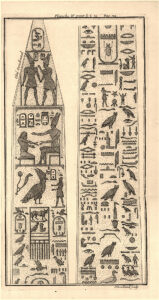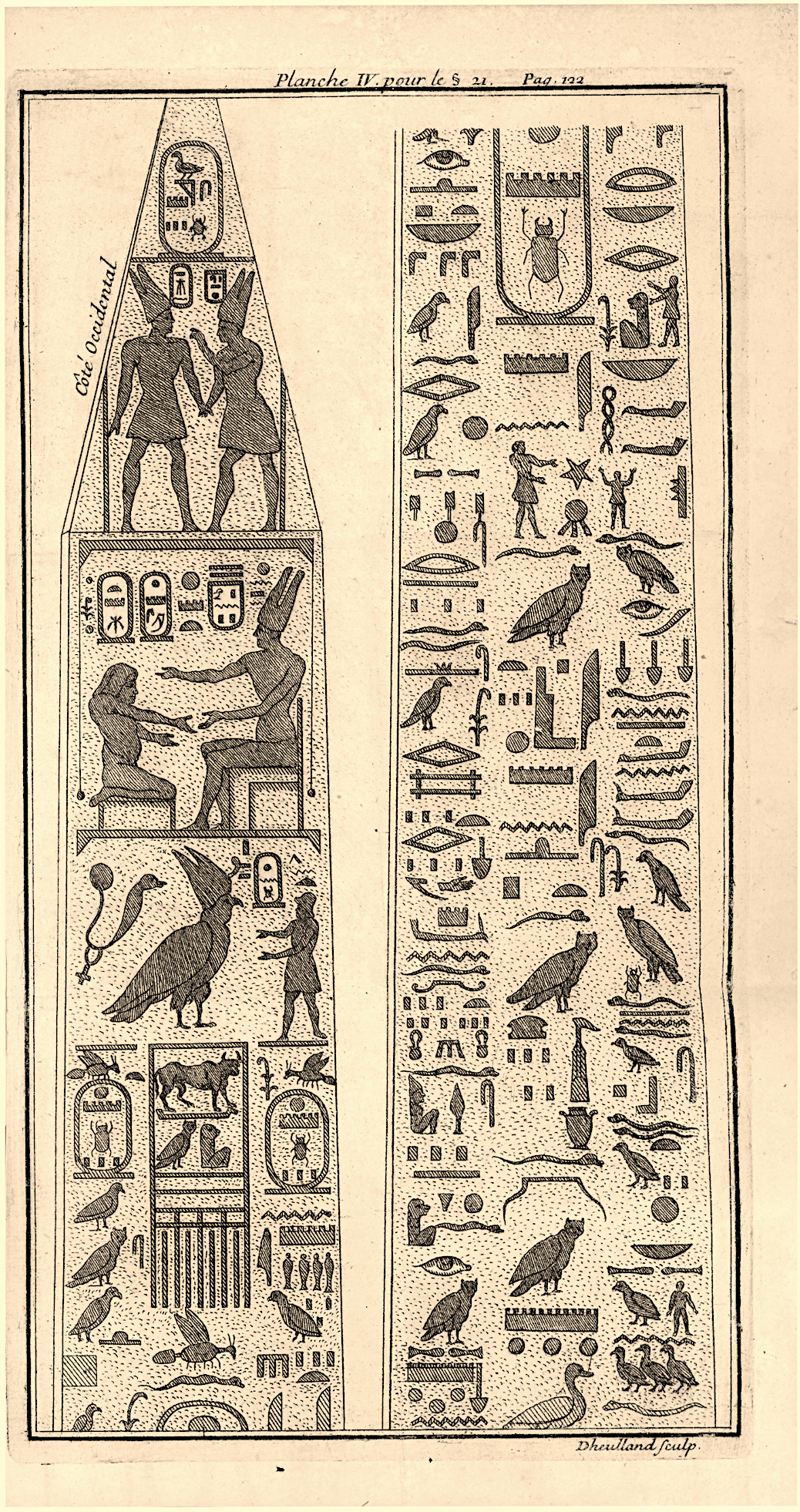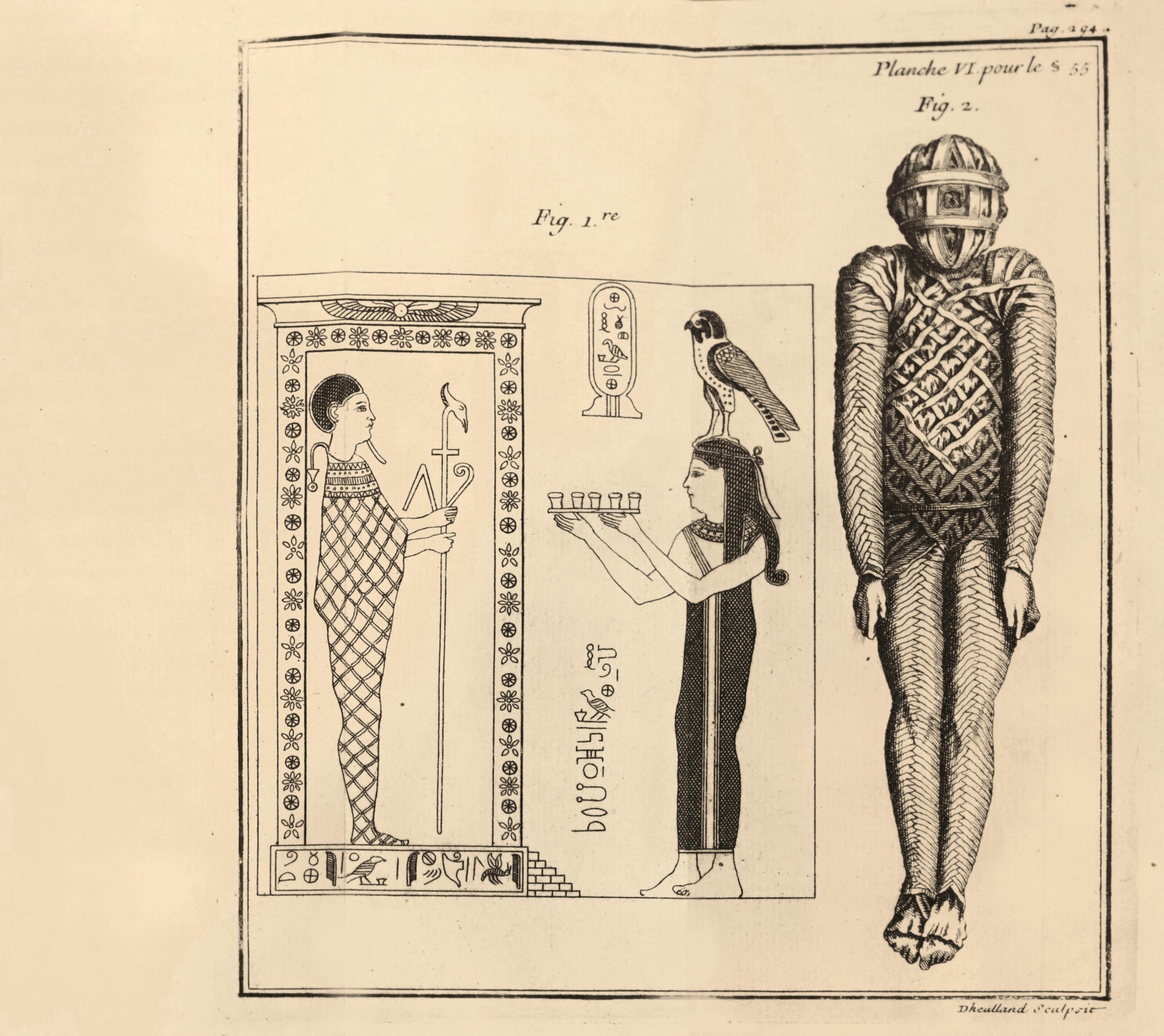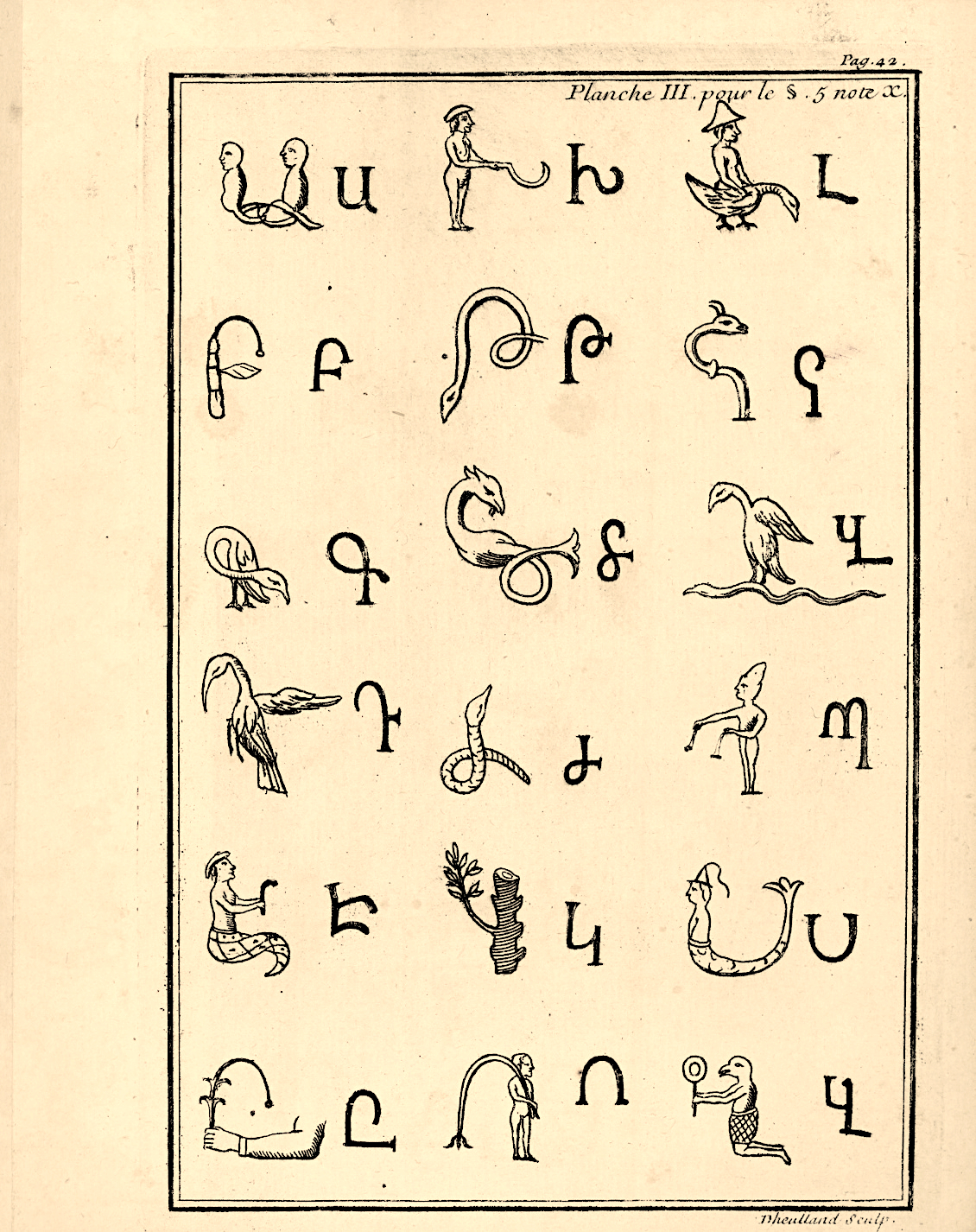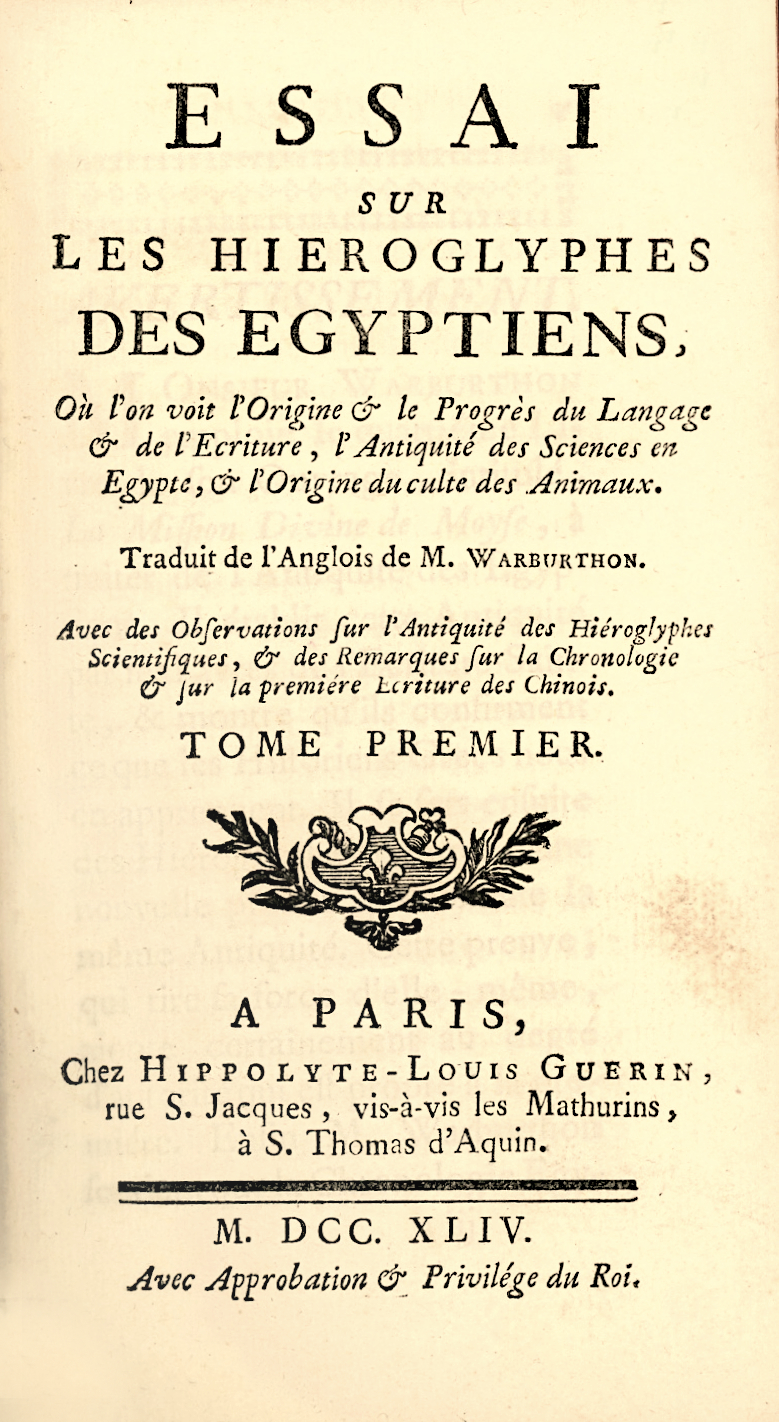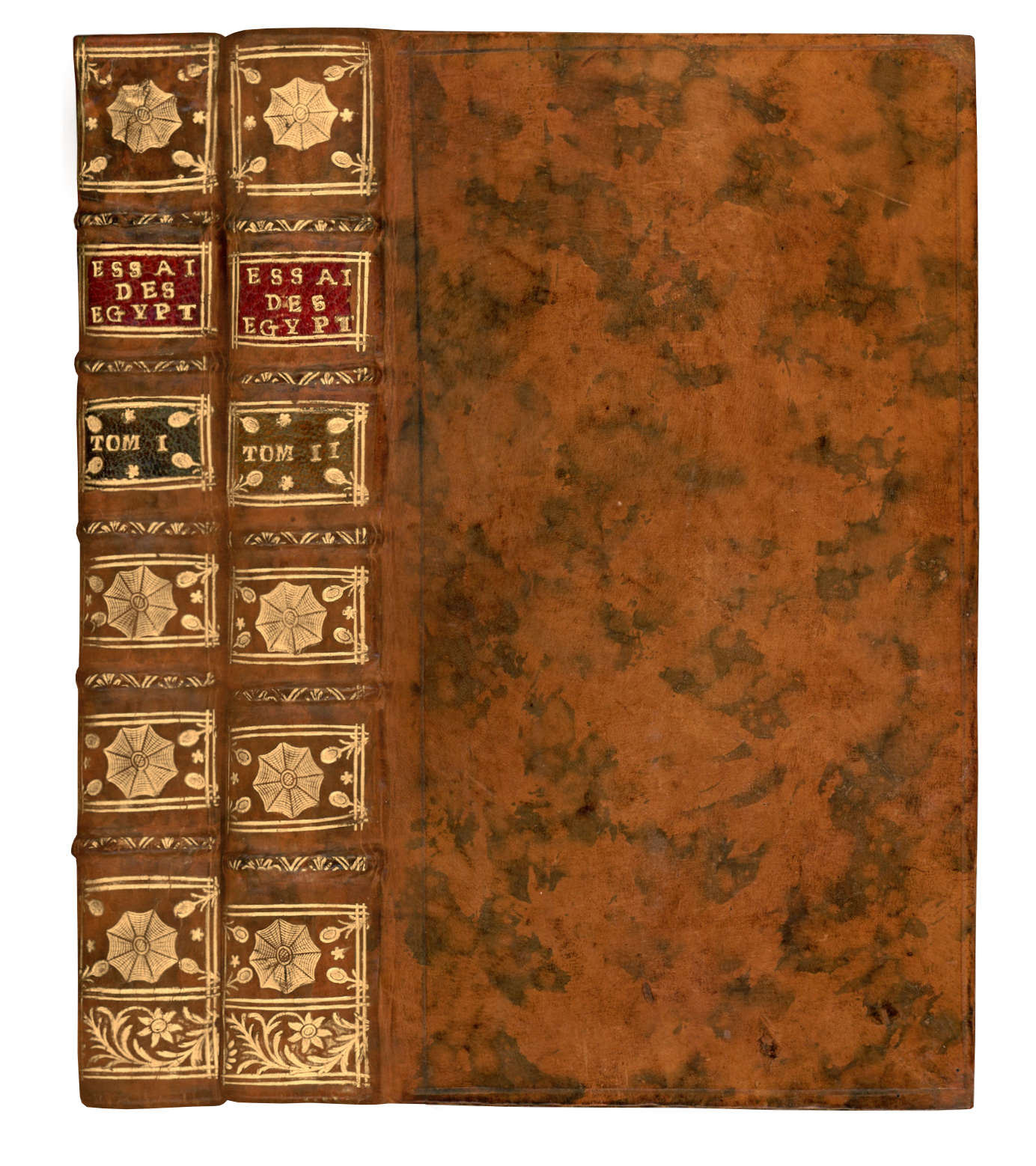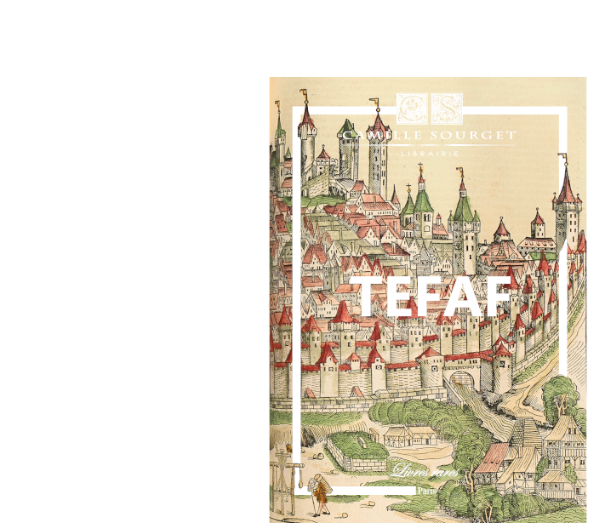A Paris, chez Hippolyte-Louis Guérin, 1744.
2 volumes 12mo of xxxii and 336 pp., 6 folding plates; xxxv pp., pp. 337 to 675, (3), 1 folding plate; full marbled light brown calf, blind-stamped fillet around the covers, ribbed spines richly decorated with “spider web” motifs, red edges. Contemporary binding.
168 x 95 mm.
Rare first edition of this remarkable study of the origins of writing.
Warburthon compares the various ancient image-based scripts, notably those of Mexico, with Egyptian hieroglyphics, and hypothesizes that they function similarly, as does Chinese writing, which juxtaposes several images to crête mêning.
This was a major advance in our knowledge of hieroglyphic writing, which had long been regarded as little more than a collection of symbols used by priests to concêl the sacred story of the gods and religion from the uninitiated. Malpeines’ comments considerably enrich Warburthon’s thesis.
« Le second volume de Léonard de Malpeines contient des ‘Observations sur l’antiquité des hiéroglyphes scientifiques et des Remarques sur la chronologie chinoise’, qui ne sont pas de Warburton. »
In fine : Sentiments de M. Bianchini sur les obélisques.
The author demonstrates the antiquity of Egyptian hieroglyphs, their symbolic, ritual and magical role, and the sprêd of this secret script to Greece. He establishes a link with the Hebrew language and tradition transmitted by Moses. It should be noted that Warburthon refers to the Samaritan text of the Pentateuch to justify the chronology he adopts – a chronology that was controversial at the time, particularly on the part of Father Kircher.
This study of the origins of writing and alphabets, as well as their symbolic and religious functions, can be compared with the work of Dupuis de Gébelin and Enel.
Essai sur les hiéroglyphes des Égyptiens was a significant 1744 French translation of an English work on the history of writing.
The Essai translated a section (book IV of volume 2) of The Divine Legation of Moses (from 1737) by William Warburthon, thought by the original author to have value independent of his main religious thesis. The work of de Malpeines, the translater, appêred under the longer title Essai sur Les hiéroglyphes des Égyptiens, où l’on voit l’origine et le progrès du langage et de l’écriture, l’antiquité des sciences en Égypte, et l’origine du culte des animaux. It was based on 140 pages of the original work of Warburthon, which in all ran to over 1 000 pages. Those pages are the part of the work that is now most remembered.
The book as published also contained a work of Nicolas Fréret, “Remarques sur la chronologie et sur la première écriture des Chinois“. The notes to Essai itself discussed the views of Warburthon and Samuel Shuckford on Chinese characters.
Condillac’s Essai sur l’origine des connaissances humaines (1746) was influenced by the Essai. The major influences in his Traité des systèmes were the Essai, and the Histoire des oracles of Fontenelle. He carried over verbatim the Essai’s explanation of the transition from painting to hieroglyphic writing. Diderot’s Lettre sur les sourds et muets (1751) was also influenced by the Essai. Warburthon’s theory on the origin of language in metaphor was taken up by the Encyclopédie group, and Roussêu. Roussêu mentions Warburthon in The Social Contract.
Kircher’s refutation of William Warburthon’s Essai sur les hiéroglyphes des Égyptiens was widely received in France, influencing Condillac and serving as a reference for the Encyclopédie, especially in the articles devoted to language, figure and enigma. This article examines how Warburthon surpasses the work of his predecessors, and maintains a complex relationship with Kircher’s Egyptological work. Although Warburthon, like most of his contemporaries, considered Kircher’s method unscientific, the Thêtrum Hieroglyphicum and the China Illustrata nevertheless served as valuable sources, with most of the engravings in the Essay taken from these two works, whose documentary value he thus recognized.
A very fine copy in contemporary binding, with spines finely decorated with “spider web” motifs.
